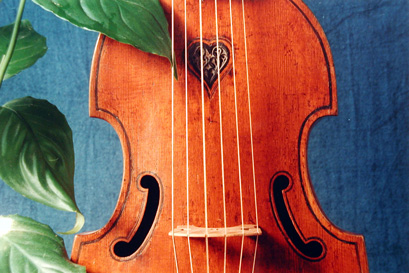The collection now contains over 170 instruments (violas da gamba, violas d'amore, violins, violas, violoncellos, violones, baryton) and historical bows dating from 1560 to 1780, all restored to their original playing conditions, which since 1982 have been placed at the disposal of members of the Orpheon Orchestra, Orpheon Consort, students of the University for Music and the Performing Arts Vienna and professional musicians all over Europe for concerts, recordings and study purposes.
According to the directors and curators of the most prominent international museums of musical instruments (Metropolitan Museum in New York, The Smithsonian Institute in Washington, D.C., The Shrine to Music South Dakota, The Russels Collection in Edinburgh, etc.) the Orpheon Foundation harbors a collection, which is unique in the world and truly represents a living cultural heritage.
The purpose of the project is to share this collection and its sonorous heritage with a wider public. It is this living acoustical heritage - the sounds that these instruments produce for those living today - that interests us, and not their mere decorative flair as objets trouvés from aristocratic residences from our distant past. We wish to hear what these instruments have to say and we wish to learn what they have to teach us, the musicians, concerning historically informed performance practice.
Furthermore the collection of the Orpheon Foundation has been placed at the disposal of institutes of organological and acoustical research. Both the Institut für Wiener Klangstil of the University of Vienna and the Institut für Holzbiologie of the University of Hamburg have already had the opportunity to carry out extensive research on the instruments of the collecton. Violin makers and bow makers have had access to the collection to investigate, restore, measure and copy the instruments. The results of this research will be made available during the exhibitions of this project, both in the form of lectures by researchers of those institutions as well as in the presentation of the copies of the original instruments which have been produced today (makers from Austria, Spain, Germany, the Czech Republic, Italy will present their creations).
The collection has undeniably an appeal which can be appreciated even by an uninitiated
public: the exhibitions of the past, which have brought the collection even as far as
Taiwan, have sufficiently demonstrated this. Performing on these instruments is a wonderful learning experience for the musician. Experiencing these instruments being played in
an appropriate atmosphere is an unforgettable experience for the listener. What is achieved is simply a marvelous interaction between the instrument, the performer and the listener. This is what we wish to share with this project.
Very important: catalog, documentary film
A catalog of the collection will be produced: 250 pages, ca. 400 photographs of the instruments. This catalog will become a standard reference work for violin-makers, university libraries, conservatories and music schools for the coming generations. (Part of this extensive and very informative catalog can be currently seen on the web site: www.orpheon.org).
A full-length documentary film will be produced (60 Minutes) for airing during the exhibitions, both at the exhibitions as well as on the local television networks. The first part of the pilot film can be seen in the attachment (video cd), the screenplay for the second half of the film can be found as an attachment to this petition. This film clearly demonstrates what these instruments mean to the practicing musician. In my estimation, watching this pilot-film constitutes an integral and very important part of this petition for a European grant, since the film accurately documents the work of the collection.
A DVD containing this film, the entire catalog and the translations in French, German and Spanish will accompany the catalog, but may also be made available separately.
